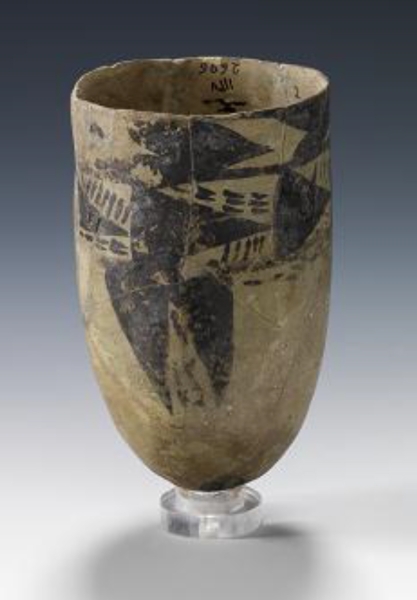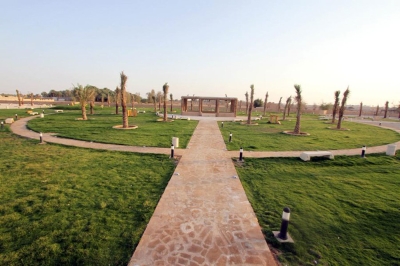
The Pottery Cup is an archaeological artifact discovered in al-Kharsaniya oil field near al-Jubail City in the Eastern Province of the Kingdom of Saudi Arabia. It is crafted from green clay mixed with some impurities and features a cylindrical shape with an open rim and a plain edge that extends from the body of the cup. The base is somewhat pointed, and the exterior surface is decorated with colored triangles and vegetal motifs. The cup is wheel-made, oxidized-fired, and characterized by high hardness.
History of the pottery cup
The pottery cup dates back to the period between 4300 BCE and 3900 BCE. Its height is ten cm, the rim diameter is 6.7 cm, and its thickness is three mm. The discovery of the cup, along with its decorations, indicates the presence of permanent settlements in the Arabian Peninsula during the Ubaid period, the Neolithic Age. It also suggests connections with the civilizations of Mesopotamia, the Levant, and Persia.
Discovery of the pottery cup
The pottery cup is one of the results of archaeological surveys and excavations conducted by the Antiquities and Museums Sector in Saudi Arabia over recent years. It is among the discoveries made by Saudi archaeologists and scientific missions. The pottery cup is registered under number 1137 and is exhibited at the National Museum in the capital, Riyadh.
Related quizzes
Related articles

